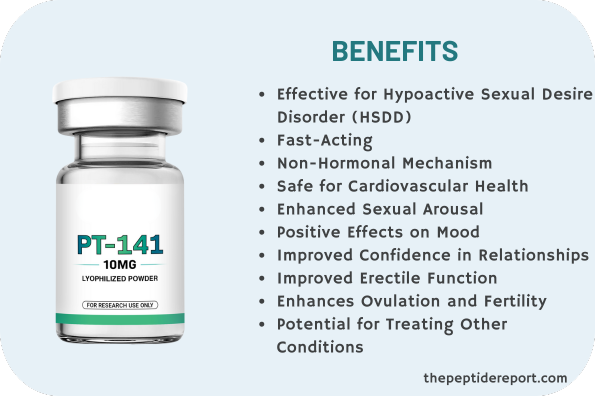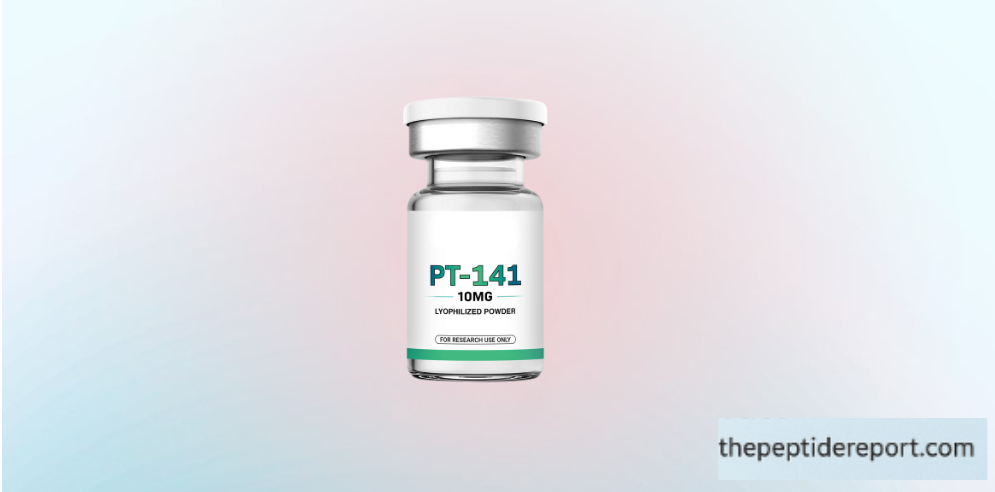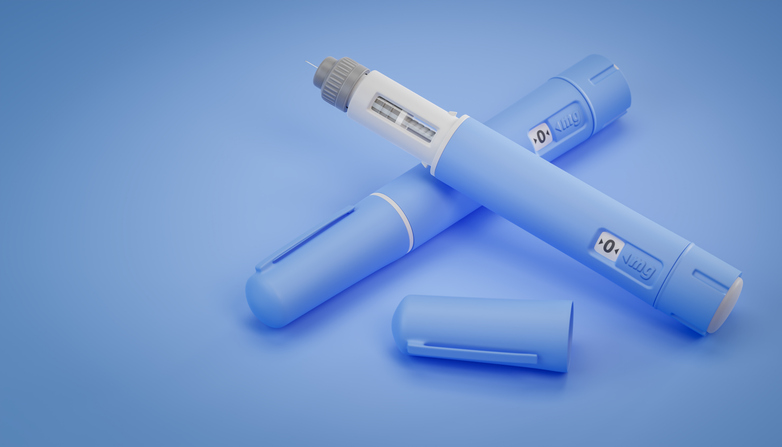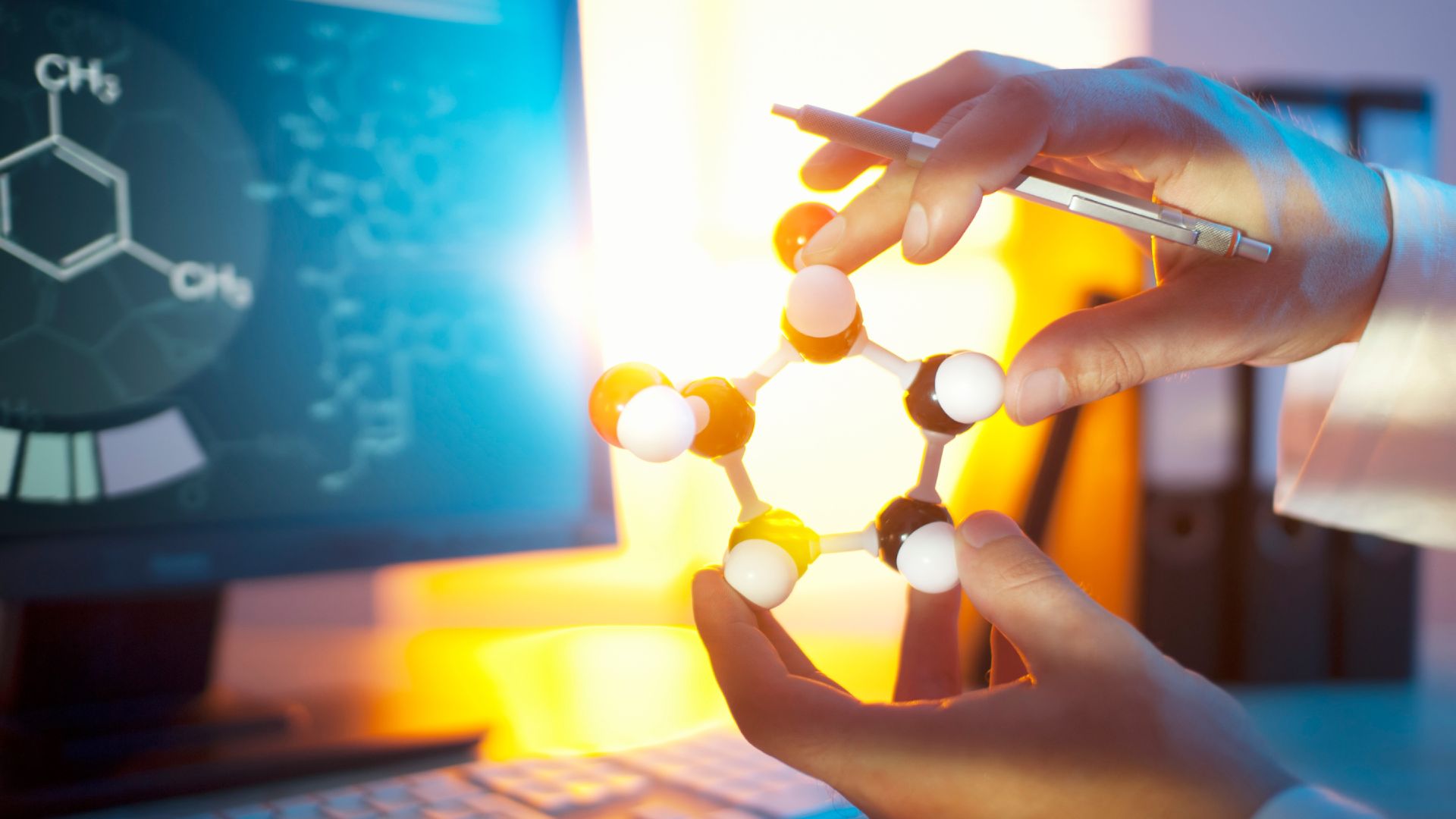Table of Contents
So you’ve heard the buzz about PT-141. Libido booster. Fat-burner. Mood enhancer.
But if you’re thinking about trying it, here’s the first real decision you need to make:
Should you use the nasal spray, or go with the injectable version?
Both forms deliver the same active ingredient—bremelanotide—but the way you take it changes everything: how fast it hits, how long it lasts, and whether you’re more likely to end up nauseous or feeling amazing.
Let’s start with the basics.
Introduction to PT-141 Peptide Therapy
PT-141 is a synthetic peptide that targets the brain—not your blood vessels—to help increase sexual arousal, desire, and mood. Unlike Viagra or Cialis, which just improve blood flow to the genitals, PT-141 switches on a part of the brain that controls sex drive, motivation, and appetite (called the melanocortin system). That’s what makes its effects so powerful, and why they often feel more authentic than just a ‘rush of blood.
That means it’s not just for people with performance issues—it’s for anyone who wants to actually feel more desire, not just increase blood circulation.
It’s already FDA-approved as an injectable medication for women with low libido (aka hypoactive sexual desire disorder, or HSDD), but it’s also used widely off-label by men—and has a strong following in the wellness world for its additional benefits like energy, focus, and appetite suppression.
Definition of PT-141
PT-141, or bremelanotide, is a lab-engineered peptide derived from alpha-MSH (alpha-melanocyte-stimulating hormone). PT-141 binds to MC4R and MC3R receptors in the brain which switches on neural circuits connected to arousal and reward.
Originally studied as a tanning peptide, researchers quickly noticed a “surprising” side effect: users reported spontaneous arousal and heightened sexual desire. That kicked off years of research that led to the FDA-approved injectable version (Vyleesi) for women. Today, it’s increasingly popular with men and women alike.

How PT-141 Works in the Body
Here’s where it gets cool.
PT-141 doesn’t mess with hormones. It doesn’t boost testosterone or estrogen. It doesn’t dilate blood vessels. Instead, it acts centrally in the brain, stimulating the melanocortin pathway to turn on arousal signals at the neurological level.
What that looks like in practice:
-
Increased dopamine → more motivation, desire, and reward-seeking behavior
-
Serotonin modulation → improved mood and stress response
-
Oxytocin signaling → enhanced bonding, connection, and social behavior
That’s why PT-141 works even for people who haven’t responded well to standard ED meds or hormone therapies. It’s not treating a plumbing issue—it’s turning the brain back on.
Potential Benefits of PT-141
Many users report feeling more “switched on” after dosing—emotionally, mentally, and sexually. Here’s what that can look like:
-
Arousal that feels natural, not forced.
People describe feeling more connected to their own sexual arousal—like the mind is engaged, not just the body. For women, this often means a return of real desire. For men, especially those who haven’t responded well to traditional ED medications, it can lead to improved performance and satisfaction that feels natural rather than mechanical. -
More engagement—mentally and emotionally.
Because it works through the brain’s reward and bonding systems, many people describe feeling more present, more motivated, and more emotionally tuned-in – but not only with a partner – this engagement spills over into work, creativity, even simple conversations. -
Better mood and social energy.
PT-141 may increase dopamine and oxytocin levels, which help lift mood, ease stress, and make social interaction feel easier and more enjoyable. Many feel more social, creative, and emotionally open after dosing—like their system is running a little smoother overall. -
A surprising drop in food cravings.
The same brain receptors that influence desire also help regulate hunger. That’s why some people find they’re less interested in snacking or feel full faster without trying.
PT-141 isn’t just about sex—it’s about switching your brain into a more alert, engaged, and motivated state.

Effectiveness of PT-141 in Treating Erectile Dysfunction
In clinical research, PT-141 has helped men with ED, including those who didn’t respond to PDE5 inhibitors, like Viagra, Cialis, and Levitra. Many reported quicker onset of arousal, more reliable erections, and a stronger sense of connection between mind and body. Unlike treatments that only address the physical mechanics, PT-141 can restore the mental and emotional engagement that makes intimacy feel natural again.
For men whose ED has a psychological or desire-related component, this central mechanism can make all the difference—helping the brain and body work together, so arousal feels authentic and performance is more consistent.
PT-141 for Female Hypoactive Sexual Desire Disorder (HSDD)
HSDD is more than just a dip in libido—it’s a persistent lack of sexual desire that causes distress or strain in relationships. For many women, especially premenopausal women, it can feel like the “spark” is gone, and no amount of effort brings it back.
PT-141 is the only FDA-approved on-demand treatment specifically for HSDD in women. In clinical trials, women using PT-141 reported a measurable increase in sexual desire, more satisfying intimate experiences, and a decrease in sexual distress. Many described the change as feeling “present again” during intimacy—more connected to their own arousal, with both mind and body engaged.
Impact of PT-141 on Mood and Weight
The same receptors that spark arousal also help regulate hunger, which is why some people notice fewer cravings or feel full faster. In short studies, women using PT-141 even lost weight without changing their routines, simply because they were eating less without trying.
By activating brain pathways linked to emotion and appetite, PT-141 also leaves people feeling more upbeat, engaged, and socially open. Many describe a subtle lift in mood and motivation, like the volume’s been turned up on daily life.
There are a lot of shady peptide sites out there — underdosed, untested, and unreliable. BioEdge Labs is different. Every product is fully third-party tested, and I’ve personally vetted their inventory for purity, consistency, and price. If you care about your research, this is the lab to trust. Visit BioEdge Labs here →
Understanding the Safety of PT-141
PT-141 is generally well-tolerated when used as directed – following the dosage guidelines below. The most common side effects are mild and short-lived—things like nausea, flushing, or a slight rise in blood pressure, usually fading within a few hours. Some people experience none at all.
One common concern is whether using PT-141 could make you dependent on it or reduce your body’s natural ability to feel desire. The evidence so far says no. PT-141 doesn’t replace hormones or permanently alter receptor function—it simply “switches on” arousal pathways while it’s active, and once it’s metabolized, your system returns to baseline. Used occasionally and within recommended limits, it’s more like flipping a light on when you need it, not rewiring the house.
PT-141 is not recommended if you have:
- Uncontrolled high blood pressure or any form of cardiovascular disease—even mild dosing can cause temporary BP spikes.
- A history of melanoma or skin cancer—this is simply because PT-141 may effect skin pigmentation and darken moles (and other small areas of the skin especially with consistent or longer term use). While this is not dangerous, it can make it harder for dermatologists to monitor for early signs of melanoma.
- Pregnancy or breastfeeding—safety hasn’t been established for these conditions.
- Hypersensitivity or allergies to Bremelanotide
Additionally, PT-141 does slow digestion during its peak so it may slow the absorption of medication if its taken at a similar time.
Legal Status of PT-141
In the United States, PT-141 is FDA-approved only as a prescription injection (brand name Vyleesi) for the on-demand treatment of low sexual desire (HSDD) in premenopausal women. That means if you want the official, regulated version, you’d need a prescription from a licensed healthcare provider.
For men, and for uses outside of HSDD, PT-141 is not FDA-approved—though it’s still widely prescribed “off-label” and available through telemedicine clinics. In the wellness and research community, it’s also sold in research-grade form, which is intended for laboratory use and not regulated as a finished pharmaceutical product.
The nasal spray form is not FDA-approved at all. It’s typically compounded by specialty pharmacies or sold online as a research chemical. Quality and dosing can vary between sources, which is why the injectable form—produced to pharmaceutical standards—is considered the more reliable choice.
Dosage and Administration of PT-141
For sexual desire or erectile support, the most common starting point is 1.75 mg, taken at least 45 minutes before intimacy. Effects can last from 6 to 12 hours, with some users reporting residual benefits into the next day. The FDA-approved schedule allows for no more than one dose in 24 hours and no more than eight doses per month. This keeps side effects low and avoids unnecessary overuse.
For mood or appetite-related goals, dosing can be more variable, but smaller amounts (around 1–1.25 mg) are sometimes preferred to minimize side effects while still activating the brain pathways linked to motivation and satiety.
How it’s administered:
-
With injection, PT-141 is delivered just under the skin (subcutaneously), usually in the abdomen or thigh.
-
Rotate injection sites to avoid irritation.
-
Use a fine insulin syringe or peptide pen (see image below) for minimal discomfort, and always follow sterile technique.
There are a lot of shady peptide sites out there — underdosed, untested, and unreliable. BioEdge Labs is different. Every product is fully third-party tested, and I’ve personally vetted their inventory for purity, consistency, and price. If you care about your research, this is the lab to trust. Visit BioEdge Labs here →

Timing matters—injecting too close to your planned activity may mean you miss the peak, while dosing too early could have the effects wearing off before you want them. The sweet spot for most people is 45 minutes to 1 hour before intimacy.
For more information about PT-141 including dosage for other goals, see our article PT-141: How it Works, Benefits, Dosage, Side Effects and Safety
Comparing PT-141 Administration Methods
PT-141 comes in two main forms—subcutaneous injection and nasal spray. Both deliver the same active peptide, but the experience, reliability, and side effect profile can be very different.
Injectable PT-141
Injectable PT-141 is delivered as a subcutaneous injection, meaning it goes just under the skin—usually in the abdomen or thigh—where it’s absorbed directly into the bloodstream. This is the form used in every FDA-approved study, so its effects, timing, and safety profile are well-documented.
Most people feel the onset within 45–60 minutes, with effects lasting up to 12 hours. Because the absorption is so predictable, dosing can be precise—allowing you to plan exactly when you want it to work. Side effects tend to be mild and short-lived, with nausea and flushing being the most common, especially on the first use.
This route also gives you control over purity and potency. The FDA-approved injectable form is produced to strict pharmaceutical standards, which means you know exactly what you’re getting every time. For anyone seeking consistency, reliability, and the confidence of using the form backed by clinical trials, injection is the clear choice.
Nasal Spray PT-141
Nasal spray PT-141 is absorbed through the mucous membranes in the nose. It often kicks in faster than injection—sometimes in as little as 20–30 minutes—which can make it appealing for those looking for quick onset or who want to avoid needles altogether.
However, absorption through the nasal passages can be unpredictable. Absorption can be affected by congestion, allergies, recent use of nasal sprays, or even the way someone tilts their head. Two people taking the same spray dose may have very different results, and higher doses are often needed to achieve the same effect as an injection. This variability can also increase the risk of side effects like nausea, flushing, or short-term blood pressure changes.
Another key difference is duration. While injections can last 6–12 hours, nasal spray effects usually wear off much faster—often in 2–6 hours. That shorter window makes it less reliable for anyone who wants lasting confidence throughout the night (and beyond).
Lastly, nasal spray is not FDA-approved. It’s typically made by compounding pharmacies or sold online for research purposes, which means quality control, potency, and dosing accuracy can vary. While it can work for some, especially in ED cases where speed matters, it lacks the consistency and robust research base of the injectable form.
Bottom line: Nasal spray may seem appealing for convenience, but if you care about reliable results, fewer side effects, and longer-lasting effects, subcutaneous injection is the clear winner. That’s why it’s the method used in all the clinical research and the one we recommend for anyone serious about results.
Where to Purchase PT-141 Online
Because PT-141 can be sold in both FDA-approved prescription form and unregulated “research use” form, the market is full of questionable options—underdosed vials, inconsistent purity, and poor storage practices that can degrade the product before it even reaches you.
That’s why it’s worth going with a supplier you can verify. BioEdge Research Labs stands out for its transparency and quality control. Every batch is third-party tested for purity and potency and produced in cGMP-certified facilities.
When you order from BioEdge Labs, you know exactly what you’re getting—high-purity PT-141, handled to pharmaceutical standards, and delivered securely. It’s the kind of peace of mind you can’t get from random online vendors.
Proper Reconstitution of PT-141
If your PT-141 arrives as a dry powder, it needs to be mixed with bacteriostatic water before use. The process is quick—just clean the vial tops, slowly add the recommended amount of water down the side of the vial, let it dissolve (no shaking), and store it in the fridge for up to 30 days.
For a full, step-by-step guide—including storage tips and injection techniques—check out our detailed guide: Peptide Safety 101: How to Reconstitute, Inject, and Store Peptides the Right Way.

Common Questions about PT-141
Is PT-141 safe?
Generally, yes—especially in its injectable form, which has been through FDA trials. The most common side effects are mild nausea, flushing, or a brief rise in blood pressure. These usually fade quickly and are more likely at higher doses or on first use. That said, anyone with uncontrolled high blood pressure, heart disease, or who is pregnant should steer clear.
How fast does it work?
With injections, most people feel it within 45–60 minutes, and the effects can last up to 12 hours. Nasal spray may kick in a little quicker—sometimes 20–30 minutes—but it usually fades much sooner, within 2–6 hours.
Does it affect testosterone or hormones?
No. PT-141 works on the brain’s melanocortin system, not your hormone glands. It doesn’t lower your body’s natural ability to get aroused, and there’s no dependency effect—when you stop, your baseline sexual function stays the same.
What about mood and weight?
Some users notice a lift in mood or a slight dip in appetite. This isn’t guaranteed, but it makes sense because PT-141 acts on brain receptors that also influence motivation and food intake.
Is nasal spray as good as injections?
Nasal spray can work, but it’s less reliable. Absorption varies a lot from person to person, and it doesn’t last as long. Injections are more consistent, longer-lasting, and backed by clinical studies.
Guidelines for Taking PT-141
If you’re trying PT-141 for the first time, the key is to start low and go slow. Most people begin with a smaller test dose to see how their body responds. For injections, that’s often around 1 mg, with the ability to increase gradually if needed. Because the effects can last up to 12 hours, you don’t need to keep redosing—plan your timing around when you want it active.
PT-141 is best used on an as-needed basis, typically no more than a few times per week. Overuse doesn’t improve the experience and can increase side effects like nausea or flushing.
Hydration and a light stomach can also make the ride smoother, especially on your first try.
Safety Concerns of PT-141
Most people tolerate PT-141 well, but there are a few things to watch for. The most common side effects are mild nausea, flushing, or temporary blood pressure changes. These usually fade quickly and are less noticeable after the first couple of uses.
People with uncontrolled high blood pressure, cardiovascular disease, or a history of stroke should avoid PT-141. It also hasn’t been studied in pregnancy, so women who are pregnant or breastfeeding should steer clear.
Another thing to know is that PT-141 can sometimes increase skin pigmentation, especially in those prone to freckles or moles. While usually cosmetic, it’s worth monitoring for any unusual or uneven changes.
Potential Misconceptions: Is PT-141 a Steroid?
One of the biggest myths floating around is that PT-141 is some kind of steroid. It’s not. Steroids work by altering hormone levels, which can throw your system off balance and come with serious risks.
PT-141 is a peptide, which means it’s a short chain of amino acids. Instead of messing with hormones, it activates the melanocortin system in the brain—the wiring that naturally controls sexual arousal and desire. That’s why the experience often feels more authentic than just a boost in blood flow.
So no—there’s no testosterone suppression, no “roid rage,” and no long-term dependency. Just a brain-level nudge that helps unlock desire when you want it.
Effects of PT-141 on Testosterone Levels and Muscle Growth
Let’s set the record straight: PT-141 doesn’t raise testosterone or directly build muscle. It isn’t a steroid and it doesn’t alter your hormone levels.
That said, many people notice indirect benefits. When sexual desire and confidence go up, motivation to train and overall activity often increase as well. More energy, more sex, more movement—that lifestyle shift can naturally support testosterone levels and muscle health over time.
But the key takeaway is this: PT-141 is not a muscle-builder or hormone booster. Its role is centered on desire, arousal, and connection. Any fitness or hormone benefits are simply a ripple effect of feeling more engaged and energized in daily life.
Review of PT-141: What Users Say
One of the best ways to understand PT-141 is to hear how people actually describe it. The common thread? It feels different from anything else they’ve tried.
Many users say they feel more connected to their own arousal—like their brain and body are finally on the same page. Instead of just creating a physical reaction, it brings desire and excitement back into the picture. Some describe it as “switching the lights back on” in a part of themselves they thought was gone.
For men with ED, the standout is how it helps when pills don’t. Guys who didn’t respond well to Viagra or Cialis often report PT-141 giving them not just stronger performance, but actual desire—something those drugs can’t deliver.
Women’s feedback is equally striking. Many share that PT-141 makes them feel like their drive and confidence have returned, leading to a more natural sense of intimacy. Some say the difference is subtle but deeply meaningful—more emotional spark, not just physical readiness.
Of course, not every review is glowing. A few users mention nausea or flushing, especially the first time, and some find the nasal spray form too hit-or-miss. But overall, the reviews lean heavily toward the positive: PT-141 helps people feel present, turned on, and engaged in a way that feels genuine rather than forced.
References and Sources for Further Reading
Learn more about PT-141 in our article PT-141: How it Works, Benefits, Dosage, Side Effects and Safety.
If you are new to peptides make sure to review Peptide Safety 101: How to Reconstitute, Inject, and Store Peptides the Right Way
There are a lot of shady peptide sites out there — underdosed, untested, and unreliable. BioEdge Labs is different. Every product is fully third-party tested, and I’ve personally vetted their inventory for purity, consistency, and price. If you care about your research, this is the lab to trust. Visit BioEdge Labs here →